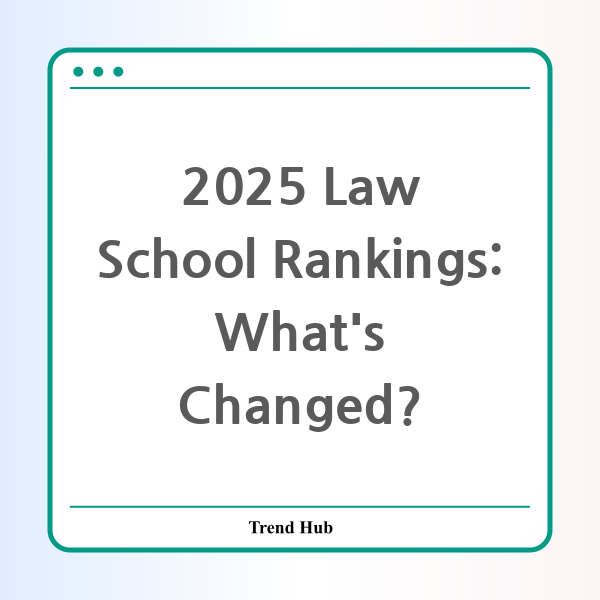* This website participates in the Amazon Affiliate Program and earns from qualifying purchases.

As we step into 2025, the world of legal education is buzzing with the latest law school rankings that have just been released. For aspiring law students, understanding these rankings is crucial, as they offer valuable insight into the best institutions for their legal education. This year’s rankings have brought both stability and surprising changes, making it imperative for students and educators alike to stay informed.
The U.S. News & World Report has once again provided a comprehensive overview of the best law schools in the United States. Notably, Yale University and Stanford University continue to lead the pack, tied for the coveted number one spot. However, this year has seen considerable shake-ups, especially among the institutions occupying the top spots known as the T-14.
According to the latest data, the University of Michigan-Ann Arbor has made a remarkable entrance into the top ten, tying with New York University at number eight. This is a significant achievement that showcases UM’s commitment to delivering an exceptional legal education.
Here’s a quick look at some of the top performers in the 2025 law school rankings:
| Rank | College/University |
|---|---|
| 1 | Yale University |
| 1 | Stanford University |
| 3 | University of Chicago |
| 4 | University of Virginia |
| 5 | University of Pennsylvania (Carey) |
| 6 | Harvard University |
| 6 | Duke University |
| 8 | University of Michigan (Ann Arbor) |
| 8 | New York University |
| 10 | Columbia University |
On the flip side, Wayne State University has found its place at number 71, a decline from its previous ranking. Similarly, other institutions from Michigan like Michigan State University and the University of Detroit Mercy have also seen a drop in their standings. It goes to show that the competitive landscape of law schools continues to evolve rapidly.
This year’s rankings also introduced new metrics assessing the job placement rates of graduates. Specifically, those who secure positions at large law firms (employing over 500 attorneys) and those obtaining federal judicial clerkships are now key indicators of a school's performance. This adjustment in evaluation criteria reflects a growing emphasis on employment outcomes, which is paramount for prospective law students.
As students consider their options for law school, the acceptance rates and tuition costs remain critical factors. For instance, the University of Michigan-Ann Arbor reports an acceptance rate of only 11.9%, with tuition fees amounting to $75,974 for out-of-state students. In contrast, Wayne State University has a considerably higher acceptance rate of 29.3% and a lower tuition fee of $43,460 for out-of-state students. Understanding these figures helps potential students make informed decisions on where to apply.
In conclusion, the 2025 law school rankings reveal not only the top competitive institutions but also the fluctuating dynamics of legal education in America. As applicants gear up for the law school admission process, keeping track of these rankings and understanding their implications is more important than ever. Whether you’re aiming for the elite top schools or considering your in-state options, data-driven insights will guide your journey toward a successful legal career.
* This website participates in the Amazon Affiliate Program and earns from qualifying purchases.